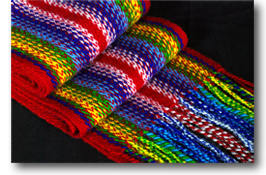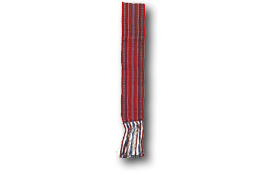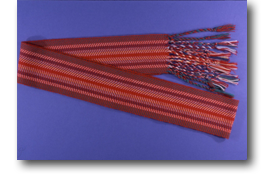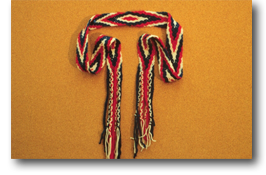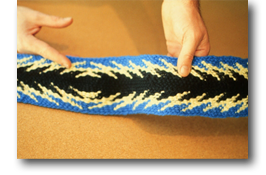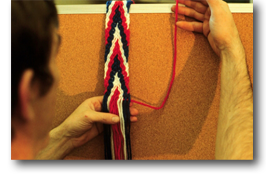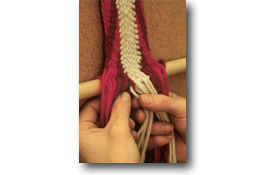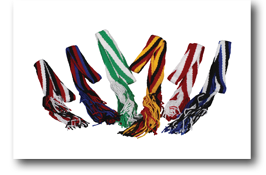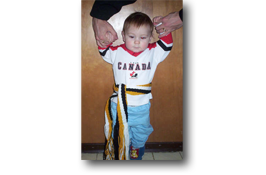How to Fingerweave
Introduction | Background | Set-Up | Weaving | Tips
It’s important to realize that what you are learning is not a craft. You are learning an art with cultural significance to the Metis. Sashes are a cultural symbol of Metis identity. They are often worn at special events such as weddings, festivals, and graduations. Sashes are given as special gifts. In 1998, the late Metis Senator John Boucher presented Nelson Mandela with a sash during his visit to Canada. While many other cultures create sashes, the Metis widely embraced the art. Families often used the same colours for their sashes which would help identify who they were, much like the Scottish tartans.
Sashes varied in size, design, and colour, with most being about 15 cm wide and two metres long, and using 300 to 400 threads. With the introduction of sash manufacturing by the Hudson’s Bay Company, the art of fingerweaving was almost lost.
There are many uses for the sash. The most common is as a belt. During the fur trade, Metis voyageurs wore capotes and needed sashes to hold them closed. It was used as a rope, a harness, and the threads could be used as an emergency sewing kit. By folding it in half, it could be used as a pocket to hold small items. It was used as a wash cloth and a towel. By securing the sash around the forehead and heavy packages on the back, voyageurs were able to use the sash as a tumpline. Some sacks could be 90 lbs, and some voyageurs would carry a couple on their backs at once.
Fun Facts
∞ A sash usually took about 200 hours to complete. At minimum wage, that sash would be worth over $2000!
∞ Some sashes were woven with waxed threads and were so tightly made that they could haul water short distances.
∞ The Michif words for sash is la sayncheur flayshii.
